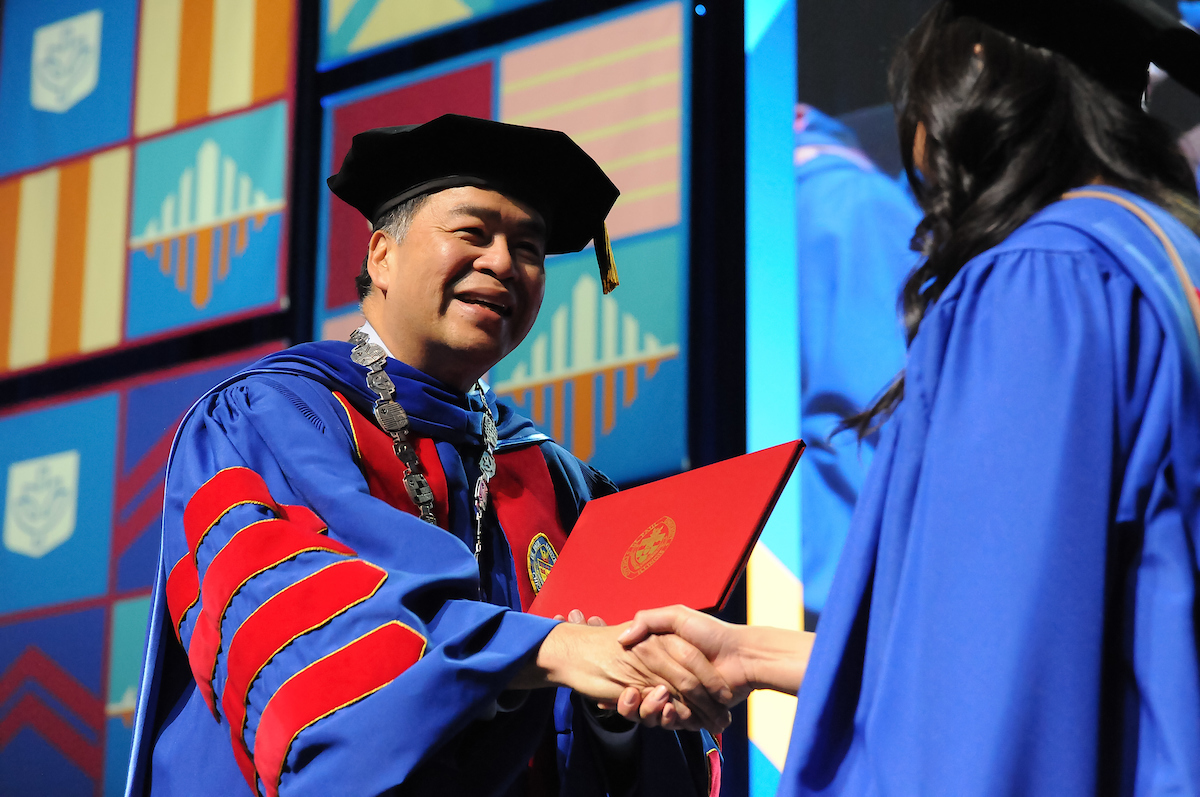 (DePaul University/Jim Summaria)Is college worth it? Is DePaul worth it?
(DePaul University/Jim Summaria)Is college worth it? Is DePaul worth it?In the preamble of the Grounded in Mission strategic plan, we considered those very questions and our collective response is illuminating: “In an era when higher education is increasingly challenged to demonstrate its value, DePaul University exemplifies how a mission-driven institution responds to pressing human problems and transforms communities through education, collective engagement, and innovation.”
Even as we enter a new decade, serious and appropriate questions have been raised by a variety of constituents about the cost of higher education and its measurable outcomes. Rising tuition levels, soaring student loan indebtedness, changing demographics and stagnant salaries all are factors fueling the need for higher education to validate its promise as a pathway for upward social mobility.
A 2015
U.S. Social Security Administration report indicates the lifetime earnings of people who earn bachelor’s degrees range from $630,000 more for women to $900,000 more for men than those who only earn high school degrees. Earnings are lower, yet still substantial, when controlled for factors that influence earnings and the probability of college completion: $450,000 for women and $655,000 for men. Graduate degrees create about $1.1 million more for women and $1.5 million more for men compared to those whose highest degree is high school.
Georgetown University’s Center on Education and the Workforce recently
issued a study evaluating the net present value, or NPV, of college degrees 10 and 40 years after graduation. It defined NPV as “how much a sum of money in the future is valued today… costs, future earnings, and the length of time it would take to invest and earn a certain amount of money over a fixed horizon.”
The NPV of a DePaul degree over this 40-year span made the top 10 percent of the 4,500 colleges studied, with a value of $1,059,000. Spot checks of enrollment profiles from 1980, 1990 and 2000 suggest that as DePaul has grown, the number and percentage of first-generation students we enroll has grown too. The result of this enrollment growth is that DePaul has provided increasing numbers of students, including first-generation students—who are more likely to be low income, a student of color, or use English as their second language—with the opportunity to earn a degree that produced a strong return on their investment in education, while creating an effective route into the middle class.
Current demographic projections indicate that the traditional-aged college population will transition from majority white to majority brown and black within the next decade. Experience is DePaul’s advantage in serving this larger population of students of color in the pipeline. We have been working for decades to create an ever-improving living and learning environment where all of our students can feel at home. These efforts have included diversifying the ranks of students, staff and faculty; building the entire university’s multicultural competencies; and creating support systems such as student identity-based centers and faculty and staff affinity groups, among others.
Our vision for DePaul is to be unequaled among urban universities in the United States in ensuring the success of a diverse community of learners. By focusing our attention on the pursuit of that vision, DePaul will continue to foster upward social mobility. Our strategic actions today, and in the coming years, will have positive implications for our ability to create a more equitable society over the next 40 years.
While we have much more to learn to ensure DePaul is a welcoming place for everyone, the fact that we have traveled further along this path than many of our counterparts gives us confidence we will continue to be successful in delivering on our mission to foster social justice and reduce inequality for people and communities often left behind.
This is our challenge—the issue that calls us to consider “What must be done?” It’s what our patron saints Vincent and Louise taught us to do.